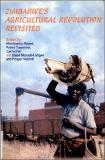| dc.contributor.author | Mariga, Irvine K. | |
| dc.coverage.spatial | Zimbabwe. | en |
| dc.date.accessioned | 2016-02-05T12:30:50Z | |
| dc.date.available | 2016-02-05T12:30:50Z | |
| dc.date.issued | 2006 | |
| dc.identifier.citation | Mariga, I.K. (2006) Cotton research and development: 1920-2004, In: Rukuni, M., Tawonezvi, P. and Eicher, C. (eds.) Zimbabwe's agricultural revolution revisited, pp.381-398. Harare: UZ Publications. | en |
| dc.identifier.isbn | 0869241419 | |
| dc.identifier.uri | https://opendocs.ids.ac.uk/opendocs/handle/20.500.12413/8902 | |
| dc.description | A research paper on cotton research and development in Zimbabwe during the period 1920-2004. | en |
| dc.description.abstract | Cotton production occupies a special niche in Zimbabwe’s agriculture. Cotton is a major cash crop and a source of rural employment. Furthermore, smallholders growing cotton have improved their housing, mechanized some of their farming operations and have invested in local business centres. Vaughan-Evans (1990) believes that cotton instills discipline in farmers because of its stringent husbandry requirements. The crop has also promoted infrastructural development in rural areas by the various players in the cotton industries, such as agro-chemical, fertilizer and cotton marketing companies. | en |
| dc.language.iso | en | en |
| dc.publisher | University of Zimbabwe (UZ) Publications/ Michigan State University (MSU) | en |
| dc.rights.uri | http://creativecommons.org/licenses/by-nc-nd/3.0/ | en |
| dc.subject | Agriculture | en |
| dc.subject | Rural Development | en |
| dc.title | Cotton research and development: 1920-2004 | en |
| dc.type | Book chapter | en |
| dc.rights.holder | University of Zimbabwe (UZ)/ Michigan State University (MSU) | en |


